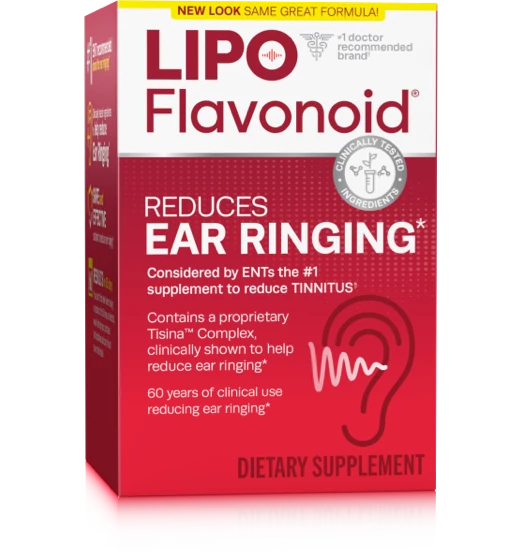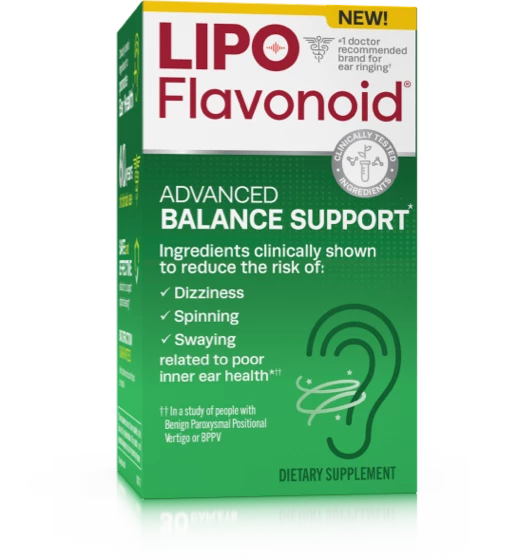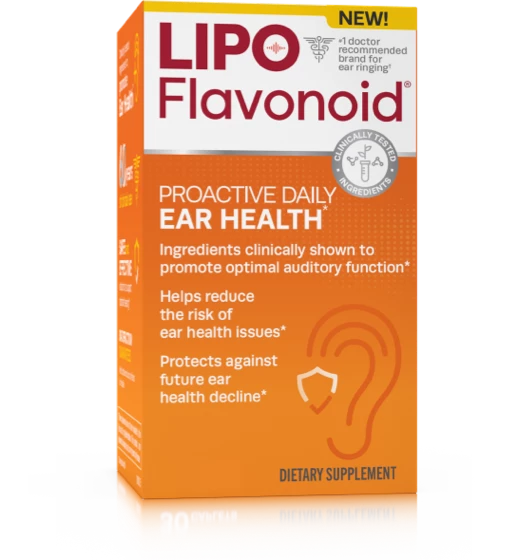- Products
- Science
-
Resources
- Tinnitus Resources
- What is tinnitus?
- Causes of tinnitus
- Tips for managing tinnitus
- Prepare for your doctor's visit
- PTSD and tinnitus
- Tinnitus FAQs
- Hearing Loss Resources
- What is hearing loss?
- Degrees of hearing Impairment
- Types of hearing loss
- Causes of hearing loss
- Treatment options for hearing loss
- Buy Now
- Coupons
- Test Your Hearing
- Test Your Hearing
- Healthcare Professionals
It’s Protect Your Hearing Month!
Sometimes life is too noisy and, unfortunately, the damage that loud noises may inflict on our hearing can be permanent – often causing noise-induced hearing loss, tinnitus (constant, loud, or irritating “ringing” in the ears), or a combination of the two.1 (What is tinnitus? Click here.)
According to the Centers for Disease Control and Prevention (CDC) approximately 15 percent of Americans between the ages of 20 and 69 have hearing loss that may have been caused by exposure to noise at work or elsewhere, and as many as 16 percent of teens already report some hearing loss.1 This means that young people as well as adults need to know how to protect their ears from dangerous noise levels – at home, at school, at work, and at play.
The good news is that noise-induced hearing damage and related tinnitus or ear ringing is often preventable.1 Even if you already have some hearing loss or tinnitus, protecting your ears from further trauma can help avoid aggravation of your symptoms and help maintain the hearing you have.
Recognize unsafe sounds.1 Noise is measured in decibels or dBs. Prolonged exposure to noises that are 85 dBs or louder can damage tiny sensory hair cells in our inner ears, causing gradual or cumulative noise-induced hearing loss.1 More than 1 minute of exposure to sounds 110 dBs or louder risks permanent hearing damage.5 For reference: a normal conversation is about 60 dBs, a motorcycle or snowmobile 100 dBs, an MP3 player at maximum volume 105 db, and a rock concert 110 dBs. There are decibel meter apps you can download for your smartphone but if you need to shout to be heard, the environment is too loud.6
Turn it down! Earbuds and earphones on cell phones, MP3 players, and other electronic devices make listening to music and playing electronic games fun and convenient but it’s important to monitor volumes. Set the volume on electronic devices to a level that still allows you to hear what’s going on around you.2 Or, follow the “60/60 Rule” by limiting the use of earbud headphones to 60 minutes at a time and at 60 percent of the device’s maximum volume.3 Many music devices also have volume-limiting controls so you can set a safe maximum volume for yourself or for the youngsters in your family. According to the Center for Hearing, Speech and Language, children’s hearing is more sensitive because the ear canal is smaller and sounds become louder as they develop in a smaller space. This can mean there’s as much as a 20 dB difference between what children and adults hear – with children’s ears being more easily damaged.4
Move away from noise.1 If you can’t turn down the volume, put some distance between you and source of the noise to lessen the impact on your ears.
Use ear protection.1 If you need to shout to be heard, you should be using ear protection.6 If you expect to be in a loud environment, if you use loud tools or vehicles, or if you are a DJ or musician, use earplugs, ear-protecting earmuffs, or custom-fitted ear molds to protect yourself.
Get screened.1 You get your eyes checked, get an annual physical, and follow other recommended health screening guidelines right? (Please say yes). Well, you should include a hearing test as part of your routine medical assessments. It’s important to know and recognize hearing loss so that further damage can be prevented and any affects of hearing loss on your life can be mitigated.
Consider a nutritional supplement to help manage tinnitus symptoms. According to a recent survey of 250 ear, nose and throat specialists (otolaryngologists), 100% recommend nutritional supplements to their tinnitus patients and 85% recommend the brand Lipo-Flavonoid® specifically.7 Lipo-Flavonoid® Plus, which includes bioflavonoids for tinnitus, when taken correctly, can help alleviate the symptoms of ringing in the ears. There’s even a money-back guarantee if you don’t experience relief from ringing in the ears after 60 days of as-directed use.
We hope that National Protect Your Hearing Month helps you to kick-off lifelong ear-healthy habits – for you and your family.
References:
- Noise-induced Hearing Loss. National Institute on Deafness and Other Communication Disorders website https://www.nidcd.nih.gov/health/noise-induced-hearing-loss. Accessed September 28, 2016.
- NIDCD Recognizes National Protect Your Hearing Month and National Audiology Awareness Month. National Institute on Deafness and Other Communication Disorders website https://www.nidcd.nih.gov/news/2014/nidcd-recognizes-national-protect-your-hearing-month-and-national-audiology-awareness. Accessed September 28, 2016.
- October is National Protect Your Hearing Month. Hearing Loss Association of America website http://www.hearingloss.org/content/october-national-protect-your-hearing-month. Accessed September 28, 2016.
- Too Loud. Too Long. It’s a Noisy Planet, Protect Their Hearing, National Institute on Deafness and Other Communication Disorders website https://www.noisyplanet.nidcd.nih.gov/parents/too-loud-too-long. Accessed September 28, 2016.
- Occupational Noise Exposure. United States Department of Labor website https://www.osha.gov/SLTC/noisehearingconservation/. Accessed September 28, 2016.
- April 2016 Survey. Clarion Brands Inc. data on file.
*These statements have not been evaluated by the Food and Drug Administration. These products are not intended to diagnose, treat, cure or prevent any disease.
*Survey data on file
REFERENCES:
- April 2018 Survey. Clarion Brands Inc. data on file.
- Williams H, Hedgecock L. Citrus Bioflavonoids, Ascorbic Acid and Other B-vitamins in the Treatment of certain types of neurosensory deafness a preliminary report. Staff meeting of the Mayo Clinic (1962).
- Tinnitus Overview. Mayo Clinic website http://www.mayoclinic.org/diseases-conditions/tinnitus/basics/definition/con-20021487. Accessed Sept. 7, 2016.
- Understanding the Facts. American Tinnitus Associations website https://www.ata.org/understanding-facts. Accessed Sept. 7, 2016.
- Slattery WH, Fayad JN. Medical treatment of Meniere's disease. Otolaryngologic Clinics of North America 1997; 30:1027-37.
- Kumar S, Pandey AK. Chemistry and Biological Activities of Flavonoids: An Overview. The Scientific World Journal. 2013;2013:162750. doi:10.1155/2013/162750.
- Fetterman BL, Saunders JE, Luxford WM. Prognosis and treatment of sudden sensorineural hearing loss. Am J Otol 1996; 17:529-36.
- Arenberg I, Bayer R. Therapeutic Options in Meniere’s Disease. Arch Otolaryngol 1977;103: 589-93.
- Shaia F, Sheehy J. Sudden sensori-neural hearing impairment: a report of 1,220 cases. Laryngoscope 1976; 86:389-98.
- Herschberg S. Meniere’s disease. J Am Osteopathic Association 1974; 73:540-6.
- Wolfson R. Treatment of Meniere’s disease. Modern Treatment (1969) 6,3, 553-567.
- Rubin W. Vestibular suppressant drugs. Arch Otolaryngol 1973; 97:135-8




